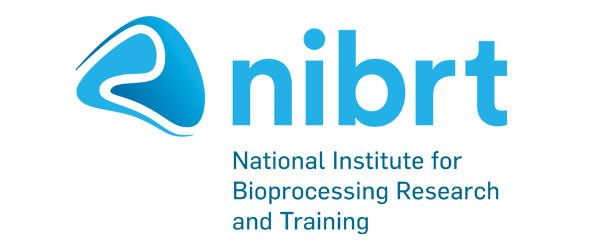Assoc. Prof. Jonathan Bones: NIBRT Research Profile
02/10/2023
The stereotype of an analytical scientist sitting alone in a laboratory pushing buttons is one that must be challenged, according to Associate Prof. Jonathan Bones. And, from his work as Principal Investigator of the Characterization and Comparability Group in NIBRT, it is clear that his research is far from this cliché. Discussing his work in the separation sciences in which he breaks down and analyses drug compounds, Bones highlights how collaborative and dynamic analytical chemistry as a field which focuses on problem-solving.
Indeed, problem-solving has clearly been instrumental in his career to date. He first chose to study analytical chemistry in DCU for his undergraduate degree, as he was interested in the opportunity to address problems. “The course was designed to be quantitative, to give you data and allow you to form ideas.” He decided to pursue a PhD there as well, using environmental and analytical data, sourced from places such as waste water treatment plants, to estimate drug use in a population. This allowed him to “put together data with processes behind them, to get a number out.” This was followed by a postdoc under the guidance of his PhD supervisor, Prof. Brett Paull, before joining Prof. Pauline M. Rudds’ group in NIBRT in 2007.
The move to NIBRT was a “massive transition,” as Bones moved from classical analytical chemistry into a far more open, fast-paced environment. But he soon realised that, “if you have the skills, you can apply them to anything. If you're able to ask questions, then you can devise an analytical experiment to answer that or get to your next stage. So I realised, pretty quickly, that there’s a lot that could be done here.” After moving to the Barnett Institute of Chemical and Biological Analysis at Northeastern University in Boston for a two-year John Hatsopoulos Research Scholarship, he returned to NIBRT in 2012, following receipt of an SFI Starting Investigator Research Grant, and founded his Characterisation and Comparability Laboratory.
Bones’s group, then, focuses on both characterisation and comparability. Characterisation involves looking at complex bio pharmaceuticals, in order to explore how elements of these drugs come together: what proteins are involved, what sequences are included, in what ways they’ve been modified. “What does it look like? How does that affect what it does?” The comparability aspect, then, is discovering what needs to be changed, or whether there is another form of a product coming out but is it chemically the same? “How do we actually show these drugs are the same? Are they actually comparable?” A lot of his group comprises analytical researchers, but there are others working with materials in cell culture and molecular fields, since “you need to have models and systems that you can analyse.” There’s therefore a lot of interdisciplinary collaboration, as the group ensures their work is as relevant to industry as possible. Employing methods of separation science to separate compounds into their various components, they then combine this with mass spectrometry, which weighs them when they are in the gas phase, and allows them to identify what they are comprised of. “There's various different ways in which we can do those experiments,” Bones explains, “But ultimately we are simplifying samples , using various separations, and then measuring them with as high accuracy as we possibly can to really understand what they are.”
He describes NIBRT as a halfway house between industry and academia, and indeed it appears that in many ways they are bridging the gap between the two. “You’re in a sphere with people who come here and realise, ‘Wait a minute. This looks like exactly like where I work.’ It's just a smaller version of it.” They work with lot of big household names, biopharma companies based both locally and internationally. Many of these companies come to NIBRT for various reasons, they may have encountered an issue while developing their product or to understand something better. They may not have access to the instrumentation that Bones’s group has, or they may want to know how similar their product is to others that are currently available. This ultimately enables his team to explore their problem until they can develop something that will be of use to the company.
Bones’s personal role as PI is to be responsible for the strategic direction of the group: “What are we going to do next? I’m looking at what’s going on around us and looking out for what problems might be about to emerge.” For instance, there might be technology that has turned up in a completely different space: what use might that be to his group? “How do we translate it? What do we need to do to bring these new skills in?” His role is also to motivate “the talented people I’m lucky enough to have on my team.”
When asked about those interested in joining a team similar to his, he highlights that the work is all instrumentation-based: “You’re dealing with things which are unbelievably fast, unbelievably sensitive which can generate unbelievable amounts of data. It’s important to have an inquisitive nature, that’s what drives folk. You also need to bring other skills. Now that we’re generating so much information, we need to know what to do with it. So you will need to ensure your tech skills are up-to-date, so you can bring in knowledge from other fields.” He also notes that it is important to figure out what your own area of interest is: “this is not just research for research sake. Learn it, apply it, do something positive with it.”
Different times of the year dictate the working week. There is a lot of international travel, for both conference season and meet-ups with clients. One of their biggest conferences, which was in June, was for the American Society for Mass Spectrometry in Houston, Texas. “It’s almost like Comicon in certain aspects. You have 10,000 people get together in anticipation of all these new technologies.” Bones has a strategic research partnership with Thermo Fisher Scientific, one of the biggest suppliers of analytical instruments, and as a result the Characterization and Comparability Group were involved in their new project launch this year.
They had been over and back to Thermo Fisher Scientific’s R&D Labs in April and May to get data generated. “So we were there at that conference to show what we had done to support that launch. There had been weeks of speculation about what was coming, because it was a whole new kind of technology Thermo were launching. There was massive anticipation. And when it was officially announced, there was that intake of breath.”
Unsurprisingly, Bones is very proud of the work that went into this launch: “It’s based on data that came from my own group, which is going to be presented and will show what can be done for a whole specific sector. And when you think about it, we’re a small institution in Dublin, on a small island on the periphery of Europe. But we’re on the global stage, sitting in a room full of thousands of people. And it’s NIBRT’s logo that’s being shared on the stage, being flashed up as a centre of excellence.”
Currently, there’s a lot of crossover happening in the field, meaning Bones’s group have biological problems to solve despite their position in analytical chemistry. The ever-expanding field of AI has also brought new opportunities and questions. They have new capabilities in terms of synthetic biology and the design of proteins. With these new technologies they can start questioning how they solve problems: “Are we doing things the right way, is there a new way, and can we do it better? Can we do it faster? Maybe we need to do things 100 ways and find the ones that actually work.” There is, of course, understandable fears regarding AI, but he believes that “if we can harness technology for the greater good, there’s huge potential there. Seeing what we can do when we bring together the data, the science and the way the world’s changed over the past 10 years, we need to understand our new role in the generation of data.”
From listening to Bones’s discussion of his research, it’s clear that analytical research is far more collaborative and hands-on than is often imagined. “It’s not about being locked in a lab alone. It’s all about working together, exploring what we can do, figuring out what the problems are and how we solve them.” The scale of modern challenges are very much multi-faceted in nature, and are too big for one person, he argues, so collaboration is the way forward. Each person is going to be limited because everybody has some limitations. “You have to realise that you do need assistance, and there's plenty of people out there who are complementary. It's strength in numbers. So let's work together and figure out what we can do”
Assoc. Prof. Jonathan Bones
Assoc. Prof. Jonathan Bones is Principal Investigator of the NIBRT Characterization and Comparability Laboratory. In 2012, he received a SFI Starting Investigator Research Grant and founded his Laboratory which focuses on the development and application of advanced liquid phase separations coupled to high resolution MS for the complete characterisation of bioprocesses and expressed therapeutic glycoproteins. His research activities have been internationally recognised through his inclusion on the recently announced Medicine Maker Power List of the top 100 most influential scientists in the field of biopharmaceutical manufacturing and analysis.


